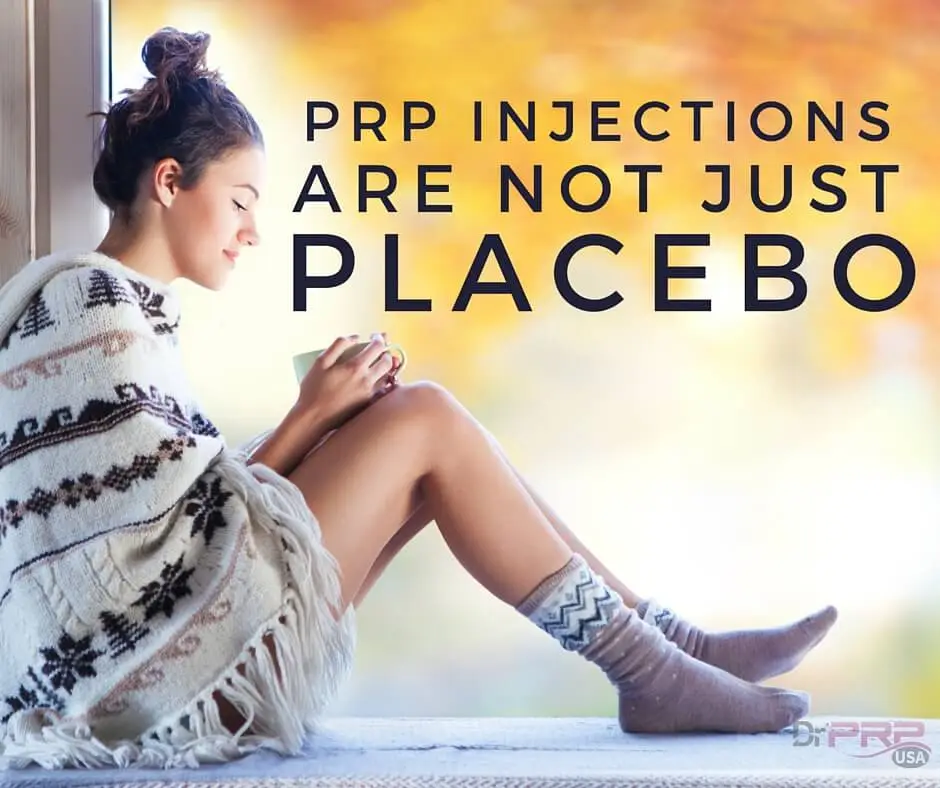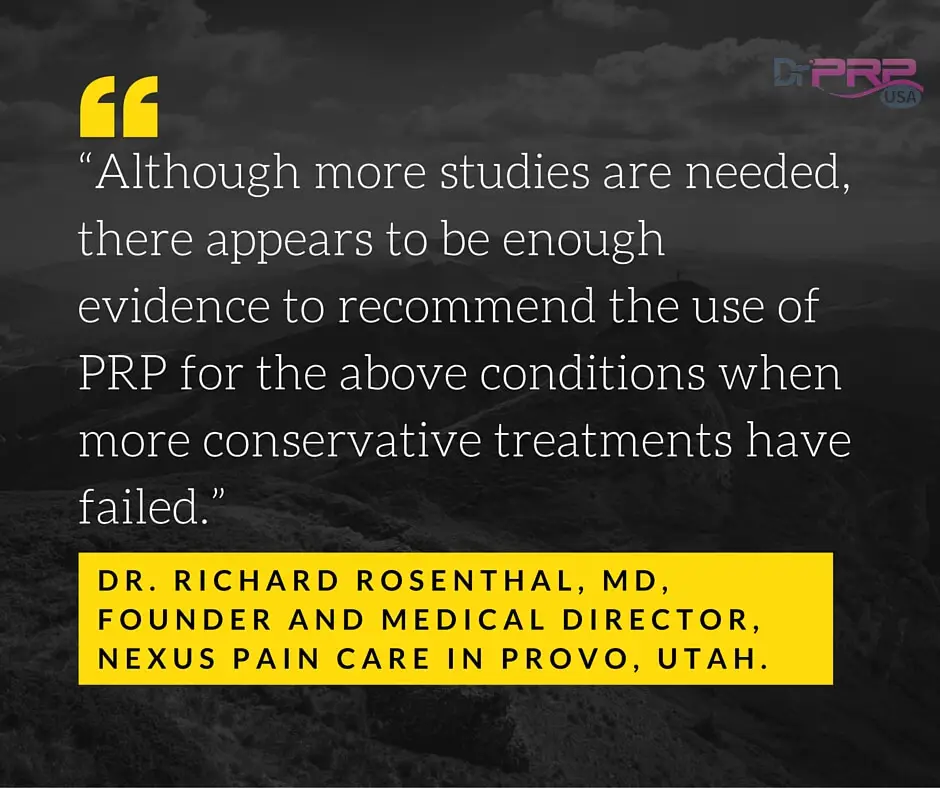| Item | Price | Qty | Total | |
|---|---|---|---|---|
 Loading Cart...
Loading Cart...Platelet-Rich Plasma Injections: More Than Just Placebo

Platelet-rich plasma (PRP) injections are one of the most controversial, but potentially highly effective solutions for a wide range of medical ailments. PRP injections have come to the forefront as a treatment option as many well-known athletes have used them to get back on the field or golf course sooner. Often considered a treatment for knee pain and chronic tendon injuries, they are consistently sought after by patients as a fast solution to chronic or acute situations. Yet, controversy exists in whether or not this treatment option is effective or nothing more than a placebo.
The Mysterious Unpopularity of PRP Injections
What’s truly the problem with using PRP injections? Is there truly a problem with using them? The treatment is often hailed as an effective solution for many needs. It’s a jack-of-all-trades. With such a large range of potential areas to help, there’s little doubt it could prove to be one of the simplest go-to-solutions available.
There are several areas of doubt. First, its effectiveness is hard to measure. It’s hard to measure its efficiency as well. Additionally, there is a significant amount of variability in effectiveness because this is a patient-derived product. That unknown factor offers some specific concern. What works for one patient may have no effect on another patient due to the composition of platelets.
Others find it’s a virtual miracle solution. There are some orthopedic specialists and prolotherapists who believe it is one of the best solutions available to quickly restore functionality to the patient. This group is actively marketing PRP injections to many groups of people including those seeking help for arthritis pain and those in need of clinical dentistry. It’s even being used as a solution for hair loss treatments.
Then, there is another group of people. These outright reject the potential benefits and functionality that PRP injections can offer. They claim it’s nothing but a placebo.
These are valid points, but it all comes down to this. There are numerous instances in which PRP injections are working. Many professional athletes with various types of injuries are seeing improvements and success. And, there is very little risk present. At the end of the day, why not try it?

Placebo vs PRP: Scientific Proof
Science has taken on the topic of PRP injections in a variety of studies. The goal is to determine if this is a true solution or nothing more than a placebo effect. Take a look at a few examples.
In one double-blind, randomized trial, researchers worked to determine if treatment with PRP was more effective than the use of a placebo in the treatment of knee osteoarthritis. The group followed 78 patients with bilateral OA spread over three groups where the first group received a single injection, the second group received two injections three weeks apart and the final group received an injection of saline solution. Both groups saw improvement over those with saline injections. Those who received two injections saw the highest level of improvement.
In another study, where researchers looked at 10 trials to determine the effectiveness of PRP injections in osteoarthritis in the knee, the group found interesting results. The group considered decreasing pain, improved function, changes in joint imaging and global assessment. They found that PRP injections do reduce pain more efficiently compared to a placebo.
Placebos Have a Real Effect
Set aside these trials for a moment. Put aside all of the satisfied people who have used PRP injections previously. There are some studies and trials that have shown that PRP did not perform any better than a placebo. That’s an important statement to make because, as mentioned, the results of these injections do vary a great deal. But, don’t count out that benefit itself.
Now, consider the placebo effect itself. There are numerous studies easily found that show that the placebo effect actually is effective. In hundreds, if not thousands, of cases, placebo pills and injections, which are often nothing more than saline, have shown to be helpful to patients. In fact, in many of these trials, well-known, highly effective drugs that are used every day for treatment of conditions did not perform as well as placebos.
What does this mean for PRP injections? In short, it means it is not possible to use placebo effect itself as a sole yardstick for measuring the effectiveness or use of these injections. Ultimately, it depends significantly on the faith of the patient involved.
The Depressing Case of Anti-Depressants
Many people dispute the effectiveness of the placebo effect. However, consider anti-depressants. Unfortunately, patients are prescribed these medications by doctors at even the slightest mention of any depression-like symptoms. Anti-depressants are a billion dollar industry on their own, accounting for as much as $12 billion in the United States annually.
Anti-depressants are supposed to work by repairing the chemical imbalance created in the brain by a lack of serotonin. However, numerous studies prove that simple placebo pills can produce the same results as actual anti-depressants—they actually increase the serotonin level in patients as well. Which means that placebos do the same thing that medications do but they do it without the harmful effects. It’s clear to see the patient’s desire to improve is often the underlying determent of success.
Arthroscopic Knee Surgery Not Better Than Placebo?
Placebo effect doesn’t just apply to pills. Consider the case of arthroscopic surgery for osteoarthritis of the knee. According to this article in New York Times it doesn’t fare better than Placebo either. More and more studies are proving it. Yet, 700,000 of these knee arthroscopies are performed every year. And that is for a condition that could be treated non-invasively through Platelet-Rich Plasma. All because arthroscopy is an approved treatment and so patients can get it done for free.
On the other hand, Platelet-Rich Plasma is 1) much safer with zero side effects, 2) doesn’t take much time to administer and 3) it actually heals the degenerated area.
Placebo Effect in Animals?
Now, let’s come back to the effectiveness of PRP. A good place to look for information about the placebo effective as it relates to PRP is in animals. Generally, we understand that animals are not susceptible to the placebo effect. There are some studies that show there is some improvement, but it’s not anything like what humans experience. But, there’s plenty of evidence that shows that horses, dogs, and other animals benefit from Platelet-Rich Plasma injections. It’s clear there is an impact here. Check out this video for more information.
What To Do Now
What is the solution here? Should patients be given PRP injections? Ultimately, we know the facts. PRP is a simple and fast way to provide natural growth factors to a patient’s injured area. It is well documented in medical science that growth factors speed up and improve the overall healing process and quicken cell regeneration. That’s the true key here.
There is clear reason to use PRP injections as a first line treatment for many injuries and chronic pain situations. It can help those facing arthritis, improve joint movement, quickly aid in the repair of ligament tears, and resolve even long-term chronic pain in tendons. It’s even effective in treating skin conditions.
To reach a unanimous consensus among medical professionals, what we need is more human randomized controlled trials. And develop a standard protocol.
Specifically, there 4 things we’d need.
- A uniform and standardized nomenclature and preparation protocols
- Definite recommendation on the number of PLTs and leukocytes cells
- Using the above two, perform a direct comparison with other therapeutic techniques
- Define the role of patients and the characteristics of the condition treated in clinical outcome
- Take the time to learn more about PRP Injections. There are few reasons to limit patients from a product with so much potential and so few risks.
To learn how to prepare Platelet-Rich Plasma using Dr.PRP Kit, click here to watch video.


